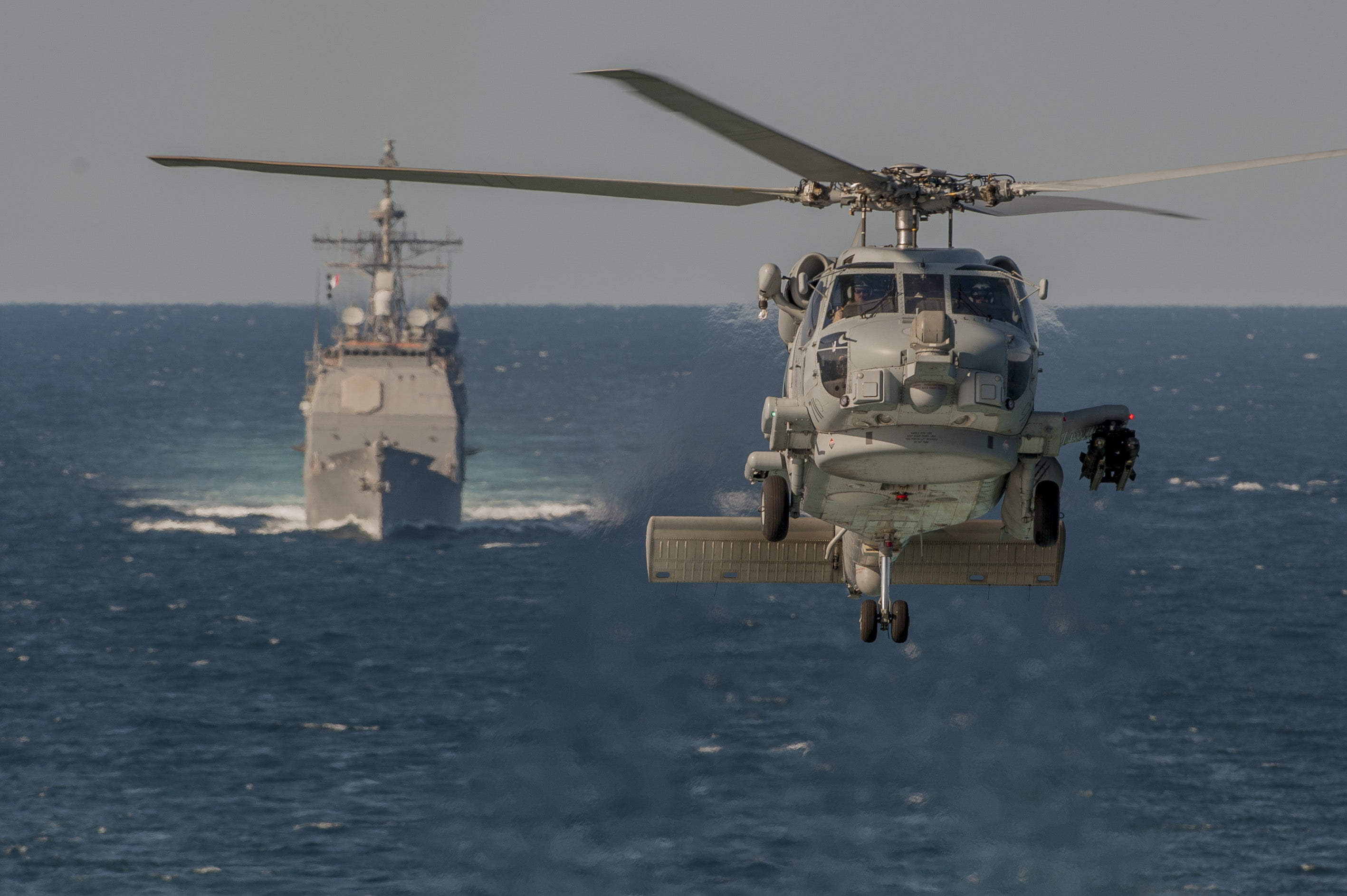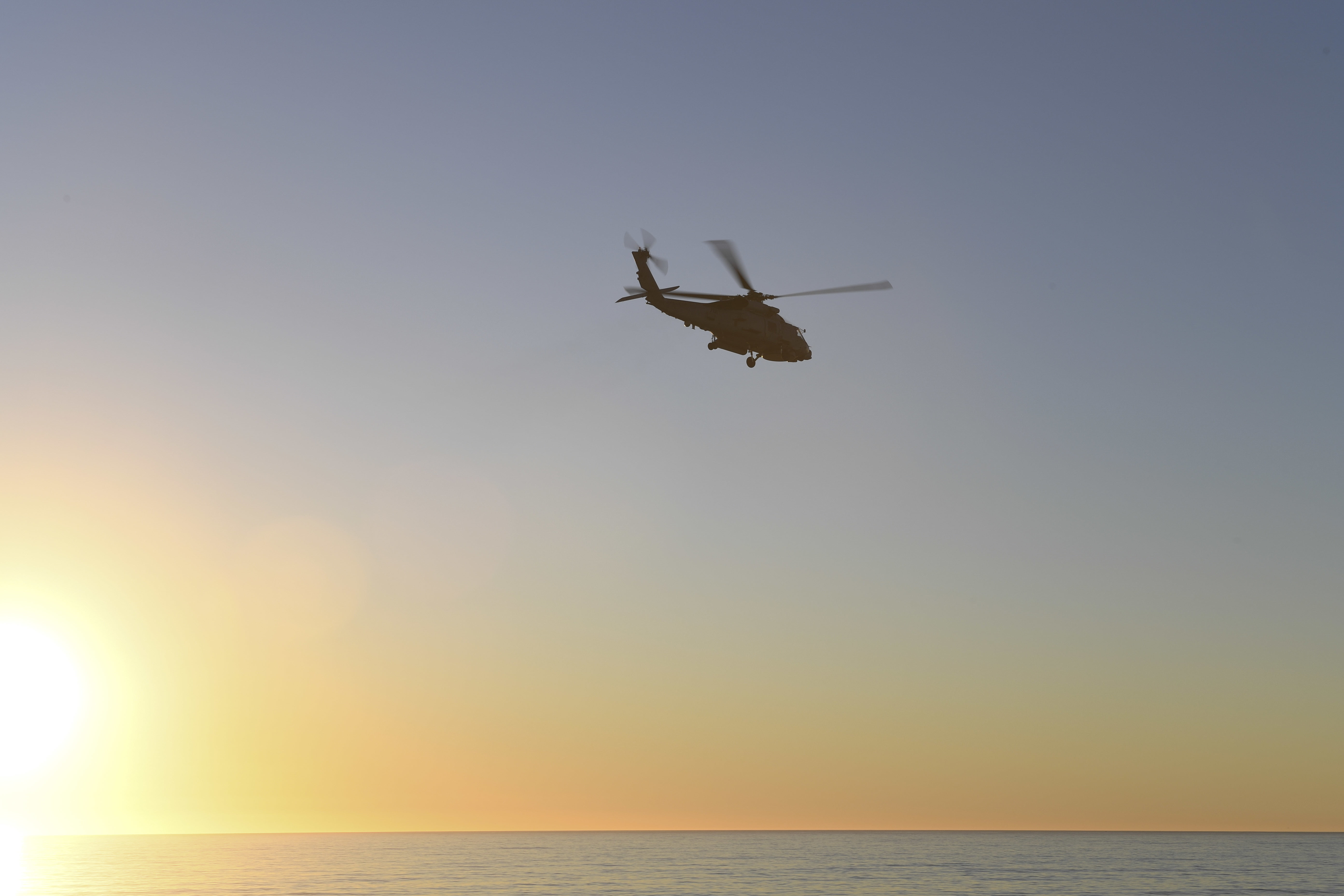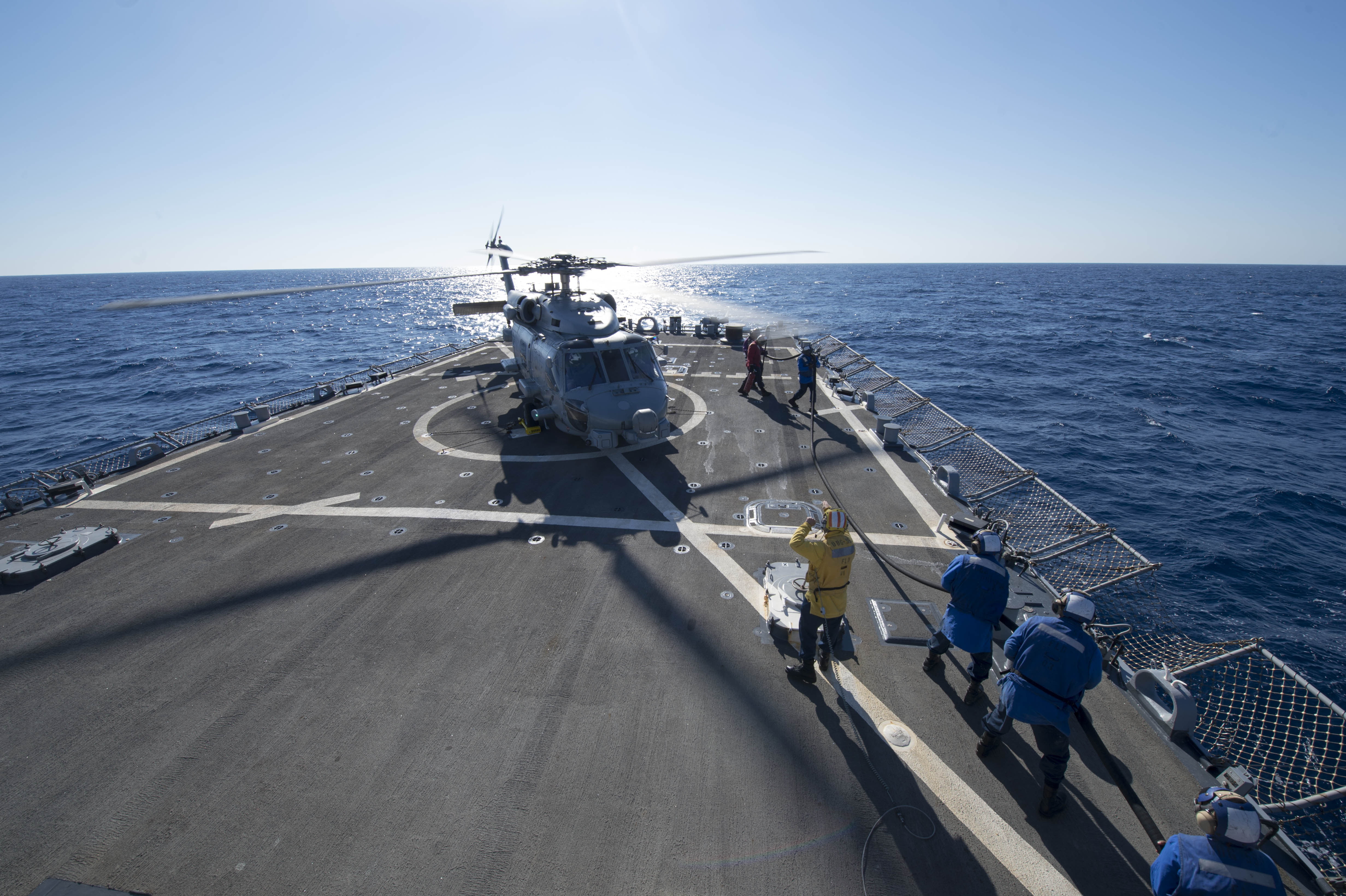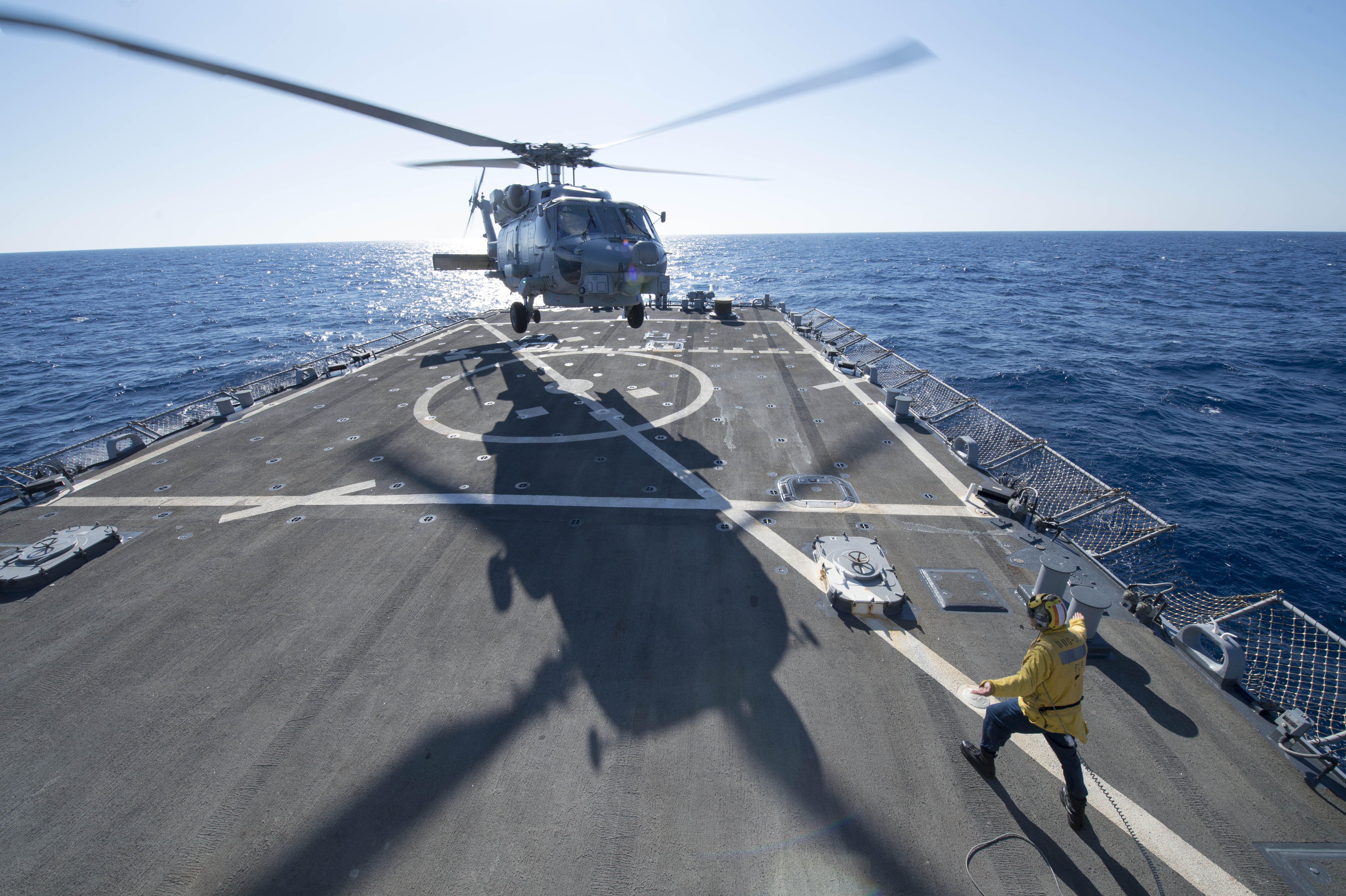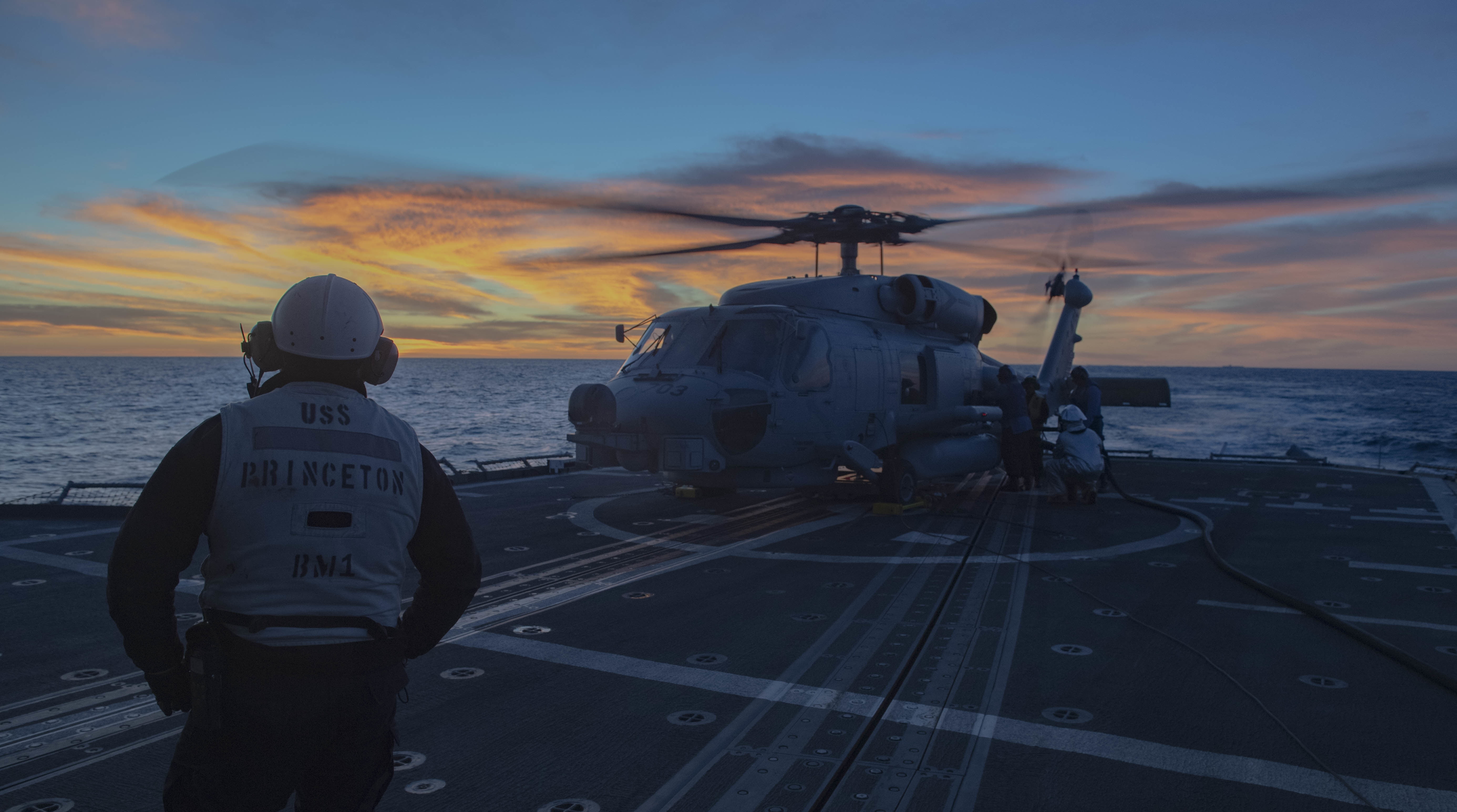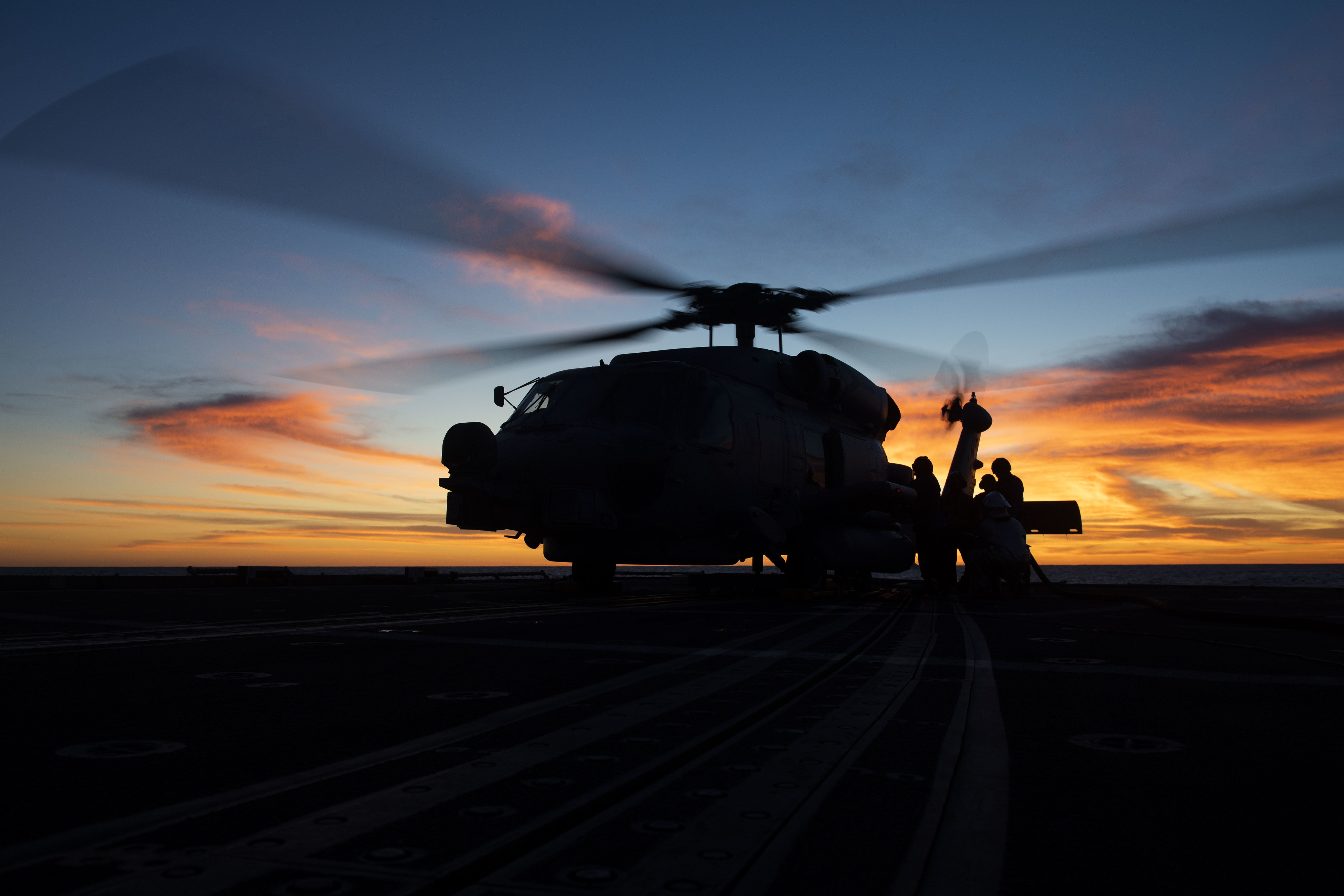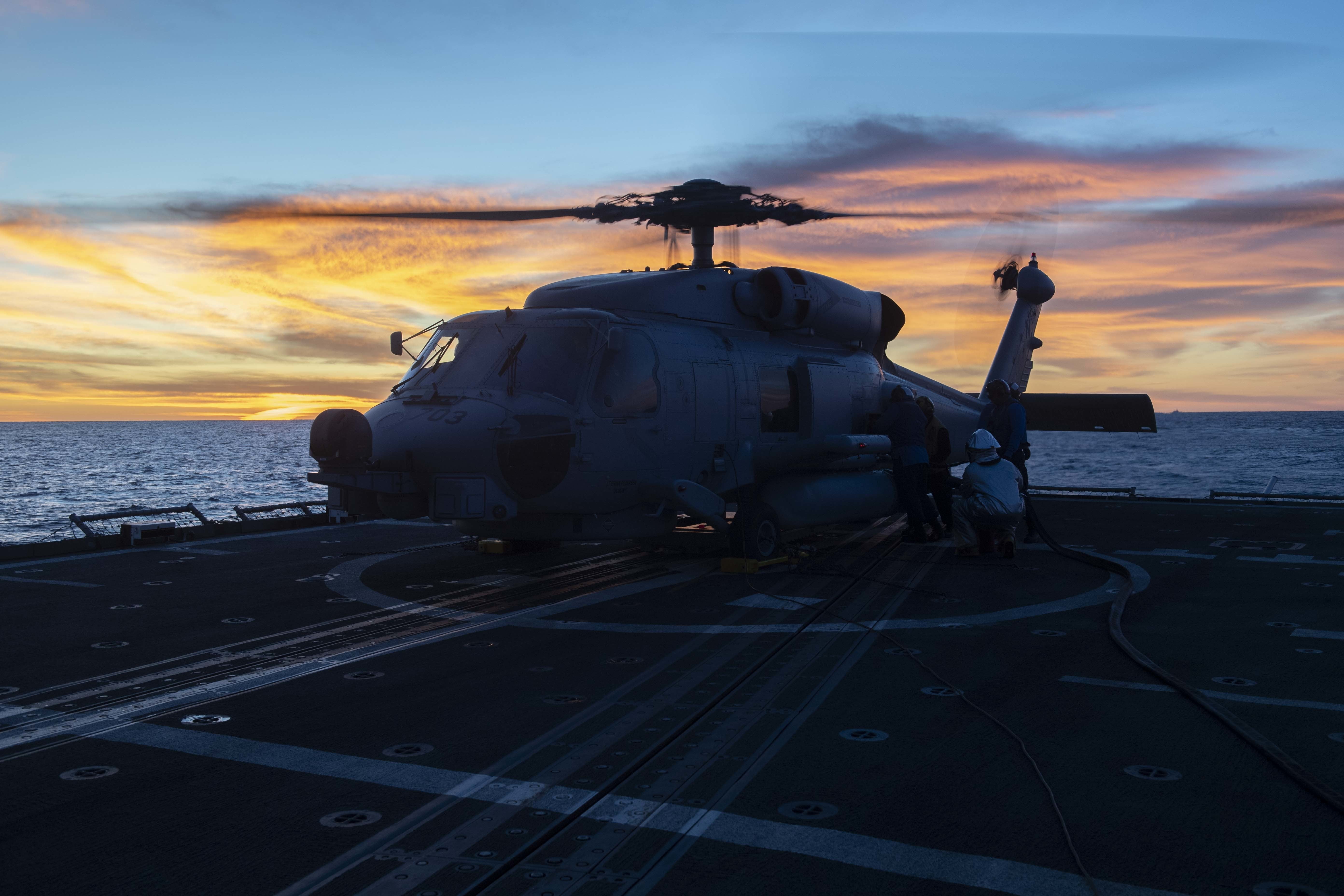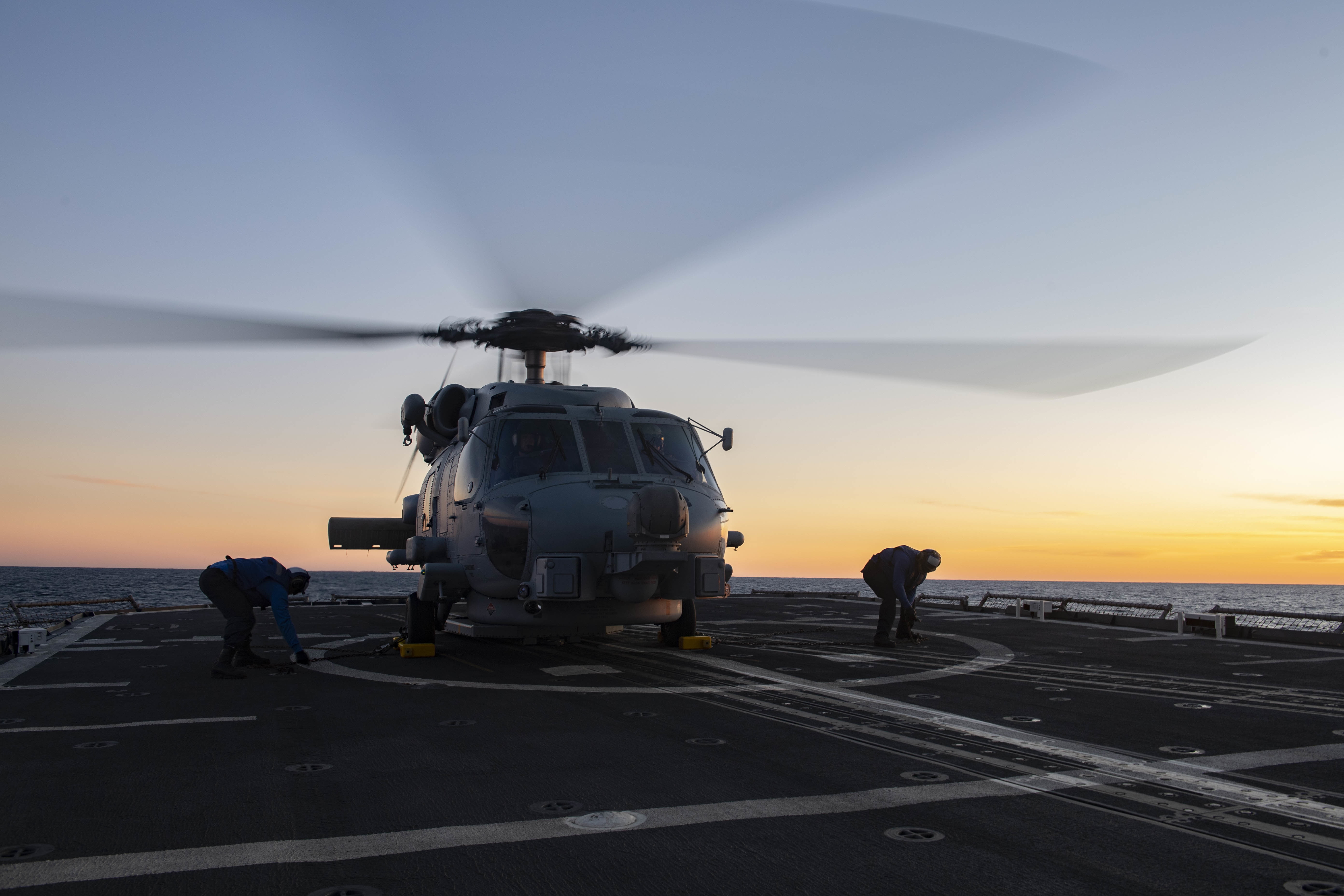By Robbin Laird
During my last meeting with Vice Admiral Miller in San Diego, we discussed the way ahead with regard to the air wing as it become integrated into a wider kill web concepts of operations.
In that conversation, we highlighted the shift as one from building an integrated air wing to working an open ended and evolving integratable air wing.
A key element in such a shift is when new platforms come onboard, the carrier or parts of the air wing, work with non-organic combat asset with integratability as key challenge and opportunity to be worked across the force to ensure that the distributed force can exercise maximum effectiveness.
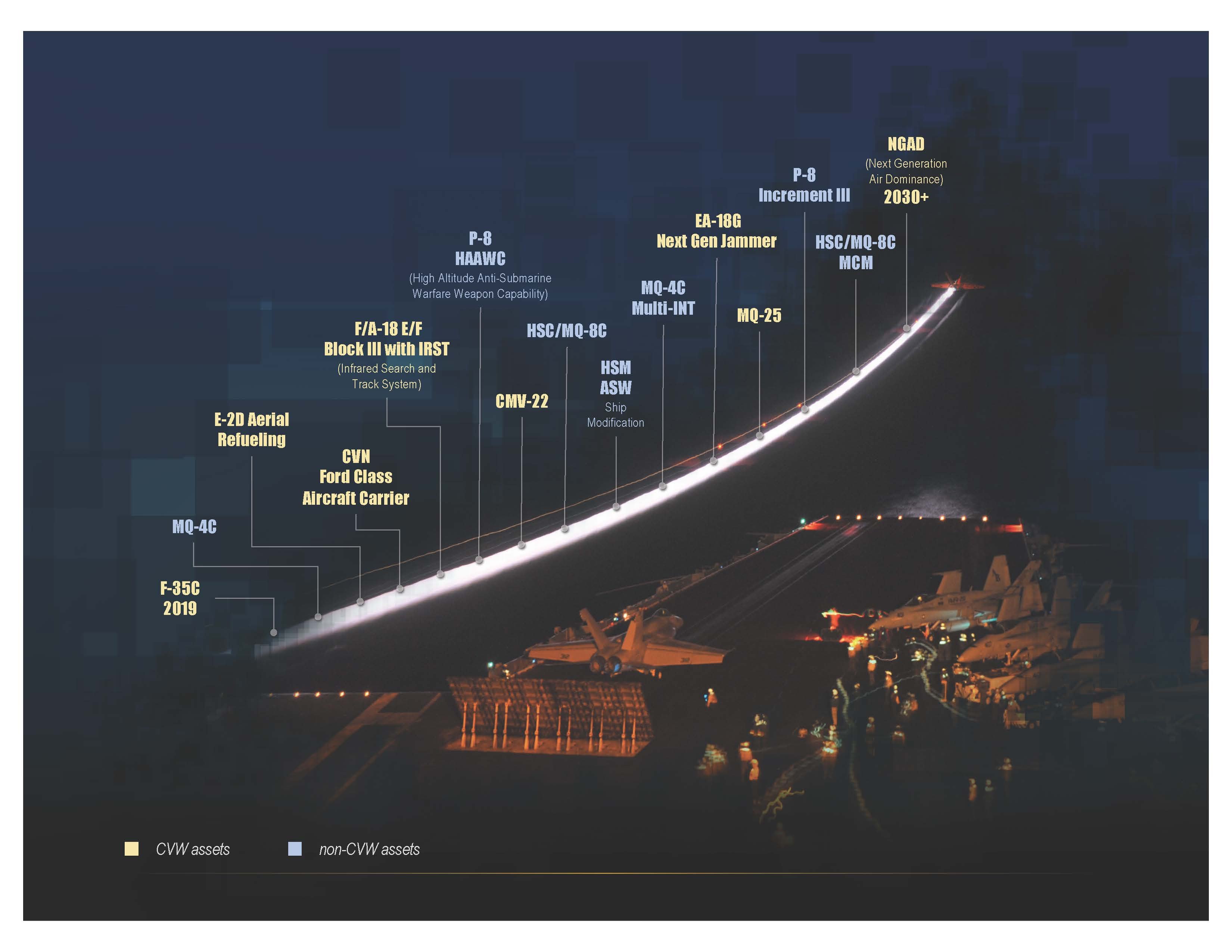
This focus creates a major training challenge but also significantly expands the impact which training can have on operations.
I discussed this challenge with VADM Miller and Rear Admiral Brophy, the head of NAWDC or the Naval Aviation Warfighting Center, during my last visit to San Diego.
The head of Fallon, Rear Admiral Richard Brophy, joined the conversation with the Air Boss, and clearly underscored the challenge: “How do we best train the most lethal integrated air wing preparing to deploy, but at same time, prepare for the significant changes which introducing new platforms and concepts of operations can bring to the force?
As the Air Boss put it: “We need to properly train the integratable air wing and we are investing in expanded ranges and new approaches such as Live Virtual Constructive training.
“I often use the quote that ‘your performance in combat never raises to the level of your expectations but rather it falls to the level of your training.’
“This is why the training piece is so central to the development for the way ahead for the integrable training.
“It is not just about learning what we have done; but it is working the path to what we can do.”
NAWDC is working with the key American warfighting centers to shape a way ahead for Naval aviation within the broader world of building an integrated distributed force operating across the spectrum of warfare.
This affects each platform or core competence being worked at NAWDC.
Recently, I had the chance to talk with CDR Jeremy “Shed” Clark, Senior Leader at the Naval Rotary Wing Weapons School (SEAWOLF) at NAWDC.
The Seawolf School focuses on Romeo, Sierra, and Fire Scout training, with Romeo being the sensor rich ASW/SUW/EW and related tasked focus helo onboard the Navy’s large deck carriers.
We discussed the shift which the Admirals had outlined in my San Diego meeting and how it affected the training approach for the helicopter communities.
The shift from focusing largely on a targeted task for carrier defense and upon how the organic capabilities on the Romeo and Sierra could play their task most effectively to one where the focus is on broadening the sensor and strike partners of these platforms who can contribute to carrier strike and defense is a significant one.
Rather than quote the CDR directly, I will identify a number of takeaways which I drew from the conversation but for which I am not going to hold him responsible for.
The first point is that the aperture of considering the role of all rotory wing assets expands significantly as one shifts from a legacy carrier strike operation focus to broader support to a distributed maritime force.
Due to the nature of where helicopters deploy this means that the sensors onboard these platforms can see their reach significantly expanded by being able to integrate with other sensors in the battlespace.
Rather than being platform focused, the shift is to empower the Romeo/Sierra/Fire Scout and their reach with an expanded sensor network.
This sensor network will be found both onboard each helicopter as well as with other aircraft onboard the carrier, but more broadly into the interactive allied working capabilities in the expanded battlespace.
The second point is that new assets coming onboard the carrier are going to be looked at from the outset in terms of what they can contribute to the sensor network and decision-making capabilities of the strike force.
For example, we discussed the coming of the MQ-25. The Romeo community is already looking at how having sensors onboard the MQ-25 can expand the reach and range of what the Romeo’s onboard sensors can accomplish for the maritime distributed force.
It is also the case that as sensor demands currently made on the Romeo can be shifted elsewhere.
The Romeo can refocus its task priorities and enhance its contributions to broader mission sets such as ASW and to focus on contributing capabilities that other platforms within the strike group are not prioritized to perform.
The third point is that the new generation of Navy operators are clearly thinking in kill web terms – they are not focused simply on what their platform can do based on how they were trained, but how they can work in the broader battlespace to deliver the desired effects working closely with partners in the sensor, decision-making and strike web.
He argued that this meant that NAWDC is looking at how to change the entire dynamic of the strike group with such an approach.
The fourth point is that with the distributed sensor network being built, manned helicopters can reduce the amount of time they need to be airborne to provide a core sensor set of tasks.
The so-called unmanned revolution is ultimately about expanding the sensor network and allowing the manned operators within that network to operate more efficiently and more effectively; it is not primarily about replacing them in the battlespace.
The fifth point is that the kill web learning curve has a major impact on thinking about acquisition.
Rather than focusing on the systems proprietary to a specific task oriented platform, the focus is shifting towards integratability: what system can I tap onboard my platform via integratability with other combat assets, and what systems do I have onboard which provide a specific capability which the kill force needs to be able to leverage to enhance combat effectiveness?
The sixth point we discussed was the repurposing of the Fire Scout unmanned system.
Originally, this was platform tasked, namely, to support the littoral combat ship.
But with the new approach of utilizing all assets within a kill-web, the question is how the helicopters working with Fire Scout can add the fleet needed capabilities, and where might the Fire Scout operate from within the fleet to gain maximum impact?
This a significant shift and part of the dynamics of change unfolding at NAWDC.
And CDR Clark highlighted that his team is working on ways to deliver some EW capability via Fire Scout integration with assets onboard the Growler EW aircraft.
In short, the shift is dramatic.
Historically, training was done in stove pipes.
One would train to be the best operator you could be on that platform.
Now, that is not enough; obviously critical but the foundation for working a different way.
The focus is upon working in a kill web and cross-linking capabilities within a distributed integrated force.
Featured Photo: Singapore (May 29, 2015) An MH-60R Seahawk helicopter and a MQ-8B Fire Scout unmanned aircraft system are displayed on the flight deck of the littoral combat ship USS Fort Worth (LCS 3) while the ship is moored pierside in Singapore. (U.S. Navy photo by Lt. James Arterberry/Released



